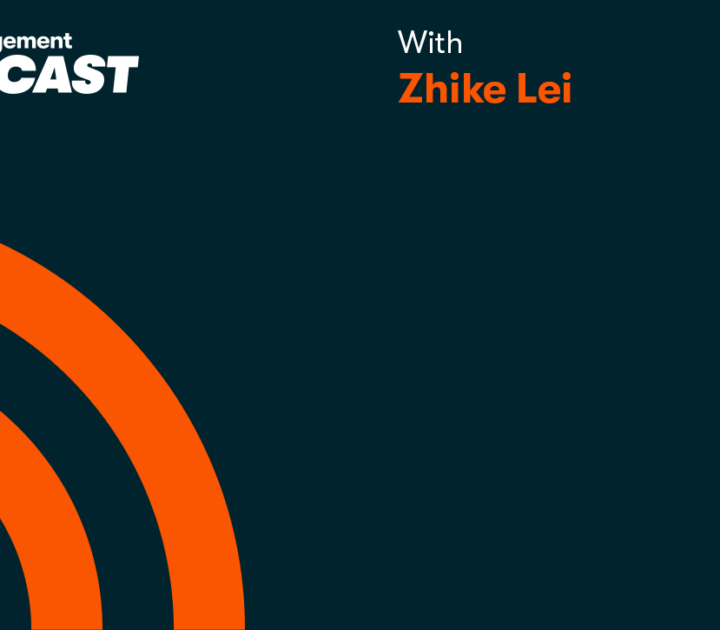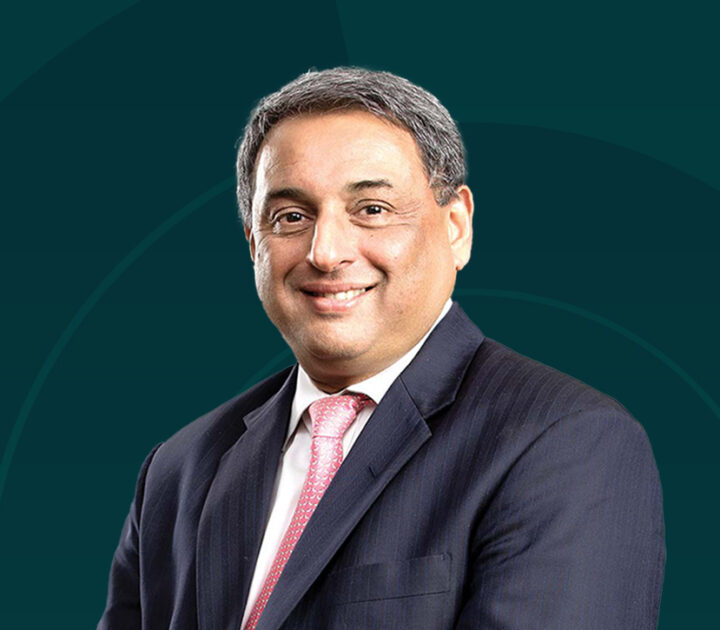At a glance
- Over the course of five years, Coesia transformed itself from a loose federation of companies into a cohesive global group
- The group achieved its “Ambition 2015” by more than doubling its business within five years and exceeding other key metrics such as EBIT and cash flow management
- Coesia’s new organizational structure, the enabler model, is a hybrid approach that allows global focus while giving each company independence and flexibility. It also provides inspiration for companies active in multiple product categories
Coesia is a privately-owned group of industrial and packaging solutions companies based in Bologna, Italy. The group, active in various product categories, went through a two-phase transformation journey when Isabella Seràgnoli became the full owner in 2002. One of her first decisions was to name it Coesia to symbolize cohesion and shared values among the group companies. Her vision was to build a professionally managed, value-driven, sufficiently diversified global group that would be sustainable in the long term.
In 2010, Seràgnoli hired a non-Italian newcomer to the industry, Angelos Papadimitriou, as CEO. Six weeks into his tenure, Papadimitriou presented to the board an aggressive ambition of doubling the business by 2015. Achieving this ambition would require a second phase of transformation in terms of strategy, business model and organization. Since the group operated as a loose federation of independent companies each with its own structure, functions and processes, it would have to design a business model and an organizational structure to support its ambition of becoming a larger, more global group.
The broader issue
While having a group of independent companies encourages entrepreneurial thinking and autonomy, it allows little common strategic direction and no common processes; there is little interaction between each company and no insight sharing. One of the main challenges is to enable the companies to become global players since they are often locally focused and lack international structures – in particular, an international sales force and a global mindset. This operating model therefore offers limited support to a group aiming to become a global, professional and sustainable company.
Choosing an operating model for companies in multiple product categories is difficult. Companies can have varying degrees of corporate guidance and business unit integration. Berkshire Hathaway, for instance, operates as a holding company. Each company in its portfolio operates independently, has a large degree of autonomy and is held responsible for its financial performance. At the other end of the spectrum are companies such as Arcelor Mittal, which provides its business units and plants in various geographies with a good deal of guidance on running their operations.
As for the organizational structure, there are many ways to organize a company. Apple, for instance, has a primarily functional organizational structure even though it has different products, a services business and a B2B payments business. P&G, an FMCG company, has a primarily product divisional structure (e.g., detergents, diapers, hair care). These product divisions – referred to as global business units (GBUs) are supported by sales and marketing organizations (SMOs), which design and execute go-to-market plans at the local level. Nestlé, another FMCG company, has a mostly geographic structure, with three main geographies. However, a few of Nestlé’s product businesses (e.g., Nestlé Waters, Nespresso) report directly to the CEO. Finally, many large companies have a matrix structure, which is more complex to manage, but has some advantages.
Coesia’s strategic enabler model
To achieve its ambition of doubling revenues in five years, Coesia needed to make choices regarding its operating model and organizational structure. Papadimitriou wanted a model that enabled the individual companies to keep their autonomy and flexibility and retain their entrepreneurial spirit. But they also needed to get to scale, leverage best-in-class technologies and business practices, and access global markets. In other words, the companies needed to have the advantages of a large company, but the team wanted to avoid creating a bloated group infrastructure and hierarchical decision making that would slow them down. It was critical to design an operating model with a lean group infrastructure that could support the growth of the individual companies.
Papadimitriou made the crucial choice of adopting an operating model that ensured the companies had significant autonomy and P&L responsibility – the “strategic enabler” model. It had three key elements to support Coesia’s companies/divisions: 1. Functions, 2. Development units and 3. Regions.
- Functions such as Group HR, IT, finance, communication, safety and security, real estate, purchasing and market development functions were created at group level to support the individual companies. It was a conscious decision to only create a few selected group functions, with few people at the group level. The HR function developed a single performance management and salary system and a talent development strategy, an intense people-development program to support talent attraction and retention and internal growth. It drove the process for creating a Coesia identity and culture.
- The development units supported individual companies on some core activities such as commercial development (e.g., service excellence, marketing, key account management), engineering and software development, business development and Lean Six Sigma.
- A regional structure was added to provide Coesia companies with a global footprint to better support global customers and increase proximity with ever more important local customers. Each region was headed by a general manager responsible for the region’s P&L. The regions were responsible for sales, service and, in some cases, local manufacturing of Coesia companies’ products. The regional general managers worked directly with the CEO of each company but reported to the head of Coesia International. The Coesia leadership team believed that adding the regional structure represented a turning point because it would force the companies to work together, start sharing the same people at regional level and create synergies in the global market.

Facing challenges
Being a classic matrix situation, the regional model met with some resistance, even from some of the companies’ CEOs. They were used to working in a simple, single dimensional entrepreneurial organization with a clear chain of command. The regional structure required them to work with GMs in different regions who did not report to them. Several years into its implementation, there were still some internal discussions on priorities, resource allocation and execution. One of the sources of frustration was unclear responsibilities as people sometimes struggled to work with the regional organization in various dotted line reporting roles. Papadimitriou saw the matrix model as an organizational fault line intended to focus attention on a specific dimension – in Coesia’s case on the complex task of better serving customers globally.
Did it work?
Despite initial skepticism throughout the company, Coesia achieved its “Ambition 2015” by surpassing the revenue goal of €1.5 billion. It exceeded other key metrics such as EBIT and cash flow management, thus preserving a strong balance sheet despite significant investments.
By the end of 2018, Coesia already had revenues of €2.3 billion with an EBITDA of €450 million, accounting for three important acquisitions signed in 2018. The group had expanded from 12 companies in 2010 to 21. Growth was split evenly between organic and inorganic, with acquired companies contributing significantly to organic growth post acquisition. Coesia’s global presence jumped from 13 to 32 countries, and its engineering staff grew to 1,500, all widely respected for technological excellence. The enabler model delivered successful results. The dramatic increase in size, both in terms of revenue and number of companies, brought new opportunities, challenges and dilemmas.
The restructuring was also considered a success. Today, Coesia is a company that can act quickly like a small company even though it is truly a mid-size global company. The enabler model is still being used.
Takeaways
In today’s fast-changing business environment, flexibility and speed are two key drivers of success. At the same time, globalization requires companies to have an increasingly global focus and organizational structures need to be adapted accordingly. Structure is a challenge for global companies because there are no easy solutions. Most global structure options create challenges as well as benefits.
Given the complexity of today’s environment, it is not surprising that many global companies choose to integrate business functions and geographic structures, resulting in a highly complex matrix structure. Coesia’s enabler model attempts to minimize this complexity by maintaining the advantages of small local companies while still benefiting from a standardized global approach. The following are some insights from Coesia’s enabler model:
- Selecting a suitable model for a company depends on various parameters and is a challenging task. There is no “one model fits all.” What is required is a unique, flexible structure that fits the company identity as well as its needs.
- The objective of the organizational structure is to provide an infrastructure that helps the company meet global aspirations and ensures long-term growth.
- Coesia has kept centralization to a minimum and created global functions that support the companies, thus creating efficiencies and removing duplications, while leaving each organization enough autonomy and flexibility.
- Coesia’s enabler model can be described as “ambidextrous”: The CEOs are autonomous but still have support from the group. Coesia plays the role of a lean holding company; it focuses only on selected areas and is flexible according to company needs.
This article is based on IMD cases IMD-7-1991 and IMD-7-1992, 2018, available from the Case Centre.



